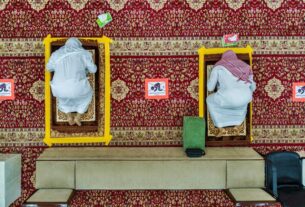New Delhi: The number of Muslim students (18-23 years) enrolled in higher education fell by more than 8.5 % according to a new report titled, “The state of Muslim education in India”. The report is authored by Arun C. Mehta, former professor at the National Institute of Educational Planning and Administration.
The report is based on data from Unified District Information System for Education Plus (UDISE+) and the All India Survey of Higher Education (AISHE).
While 21 lakh Muslim students had enrolled for higher education in 2019-20, the number fell to 19.21 lakh in 2020-21.
“From 17,39,218 Muslim students enrolled in higher education in 2016-17, the number increased to 19,21,713 in 2020-21. However, in 2020-21, the Muslim enrolment in higher education declined to 19,21,713 students from 21,00,860 students in 2019-20, thus showing a decline of 1,79,147 students in absolute terms,” the report says.
A significant trend observed across states and Union territories is the drop in enrolment percentage of Muslim students in grades 11 and 12. The representation of Muslim students drops grade 6 onwards and is the lowest in grade 11 and 12, the Hindu reported.
“While Muslims make up around 14.42% of total enrolment of 6.67 crore [students] at the upper primary level [Class 6-8], it slightly decreases to 12.62% at the secondary level [Class 9-10] and declines to 10.76% at the higher secondary level [Class 11-12],” the report states.
With respect to state-wise trends, the report says that Assam (29.52%) and West Bengal (23.22%) recorded high dropout rates among Muslim students, while Jammu and Kashmir recorded 5.1% and Kerala 11.91%.
The report also points out that many Muslim children in states like Bihar and Madhya Pradesh are still out of the education system and identifying and enrolling them in age-appropriate classes should be a priority.
It suggests inclusive policies and targeted support to help bridge the gap in education of Muslim students.
Many Muslim students come from low-income families and struggle to afford the cost of higher education. “To address this issue, it is essential to provide financial assistance and support to deserving students who face financial constraints. Enhancing and increasing the number of scholarships, grants, and financial aid opportunities targeted explicitly at Muslim students can significantly alleviate the financial burden and help more deserving students access higher education,” the report recommends.
The AISHE Survey 2020-21 had also pointed to the decline in representation of Muslim students in higher education. The report had found that enrolment of Muslim students was less than that of students from Other Backward Classes, Scheduled Castes and Scheduled Tribes communities.
SOURCE: INDEPENDENT PRESS AND NEWS AGENCIES
______________________________________________________________
FOLLOW INDEPENDENT PRESS:
WhatsApp CHANNEL
https://whatsapp.com/channel/0029VaAtNxX8fewmiFmN7N22
![]()
TWITTER (CLICK HERE)
https://twitter.com/IpIndependent
FACEBOOK (CLICK HERE)
https://web.facebook.com/ipindependent
Think your friends would be interested? Share this story!





